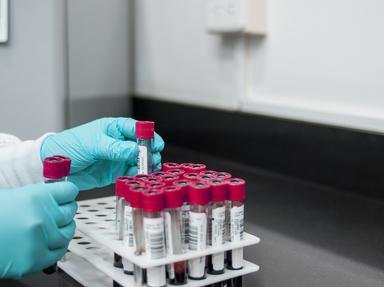Quiz Answer Key and Fun Facts
1. Propan-2-yl methylphosphonofluoridate (GB), was a nerve agent, discovered in Germany in 1938. It is the most toxic, and the second discovered, G-series nerve agent, and was used by Aum Shinrikyo in the Matsumoto incident. A volatile organophosphorus liquid, this compound causes death very soon after inhalation. Name this compound.
2. This natural toxin is secreted by a bacterium of the Corynebacterium genus. The toxin is highly potent as it stops the synthesis of proteins. This toxin causes a certain disease whose notable symptom is a swollen neck due to enlarged lymph modes. Which disease?
3. Napalm was one of the most famous chemical weapons used by the United States of America in World War 2, the Korean War and the Vietnam War. It was used to stick to skin and cause severe burns. Where does the name come from?
4. Also known as spasmogenic toxin, this toxin is produced by a bacterium of the Clostridium genus. This toxin causes a disease known as lockjaw, resulting in muscular spasms all over the body. What is another name for this disease?
5. Batrachotoxin (BTX) is a highly toxic steroidal alkaloid compound which acts upon the sodium ion channel. This toxin is used by certain Amazonian tribes for poisoning darts. It is named after the Greek word for the type of animal it is mostly found in. Which animal?
6. A mixture of the herbicides 2,4,5-Trichlorophenoxyacetic acid and 2,4-Dichlorophenoxyacetic acid was used as a chemical weapon by the United States of America during Operation Ranch Hand in the Vietnam War. This chemical weapon was named after a colour. What was its name?
7. Ricin is a highly toxic compound which prevents the synthesis of proteins from the codon sequence in messenger RNA through translation. It is produced in the seeds of a certain plant, and poisoning often happens due to consumption of the seeds. Which plant is this?
8. 1-Chloro-2-[(2-chloroethyl)sulfanyl]ethane is a toxic organosulphur chemical weapon prepared first during World War I. It causes blisters in the lungs and skin. Its mechanism of attack is alkylation of guanine in DNA. It is named after a spice, which the chemical smells like. Name the toxic compound.
9. 2-chloroethenylarsonous dichloride is an organoarsenic compound known as Lewisite Gas which was manufactured as a chemical weapon, since the compound is a lung irritant and can create blisters. What is the antidote compound to Lewisite Gas known as?
10. This neurotoxin protein is produced by a bacterium and can cause flaccid paralysis by preventing the release of acetylcholine from axon endings in the nerve. It is the most acutely lethal toxin in the world. However it has a wide use in cosmetics and medicine as well. Name the toxin.
Source: Author
angikar
This quiz was reviewed by FunTrivia editor
rossian before going online.
Any errors found in FunTrivia content are routinely corrected through our feedback system.
